Some people think that it’s not possible to build muscle after 60. Others think, “even if I could build some muscle, why bother at my age”?
Since you’re reading this, you probably do think it’s a good idea to build a little muscle after 60.
But perhaps you’re wondering how much muscle mass can realistically be added at this age, what you’d have to go through to do it, and how long it would take – and whether or not the benefits would be worth the effort you’d have to invest to do it.
In this post, I’ll go over how at 63 years old, I recently added 2.2 pounds of muscle in 4 weeks, performing only 4 workouts that each lasted under 30 minutes.
Related content on how to build muscle after 60:
- Is Building Muscle After 50 Really Something You Can Realistically Achieve?
- Build more muscle in less time at any age – my interview on the Fathers After 50 podcast
- Is It Even Possible To Build Muscle Over 50?
- Super Effective Workouts For Men Over 50 (That Won’t Take All Day To Do)
Can a 60 year old man add muscle mass?
On May 16th, I began the 4-week InBody Challenge at Rock Solid Fitness, the personal training studio in Dunedin, Florida owned by my wife and me.
The Rock Solid Fitness InBody Challenge is a 4-week event where we form teams, and each team is assigned an Accountability Coach. We go through specially designed workouts, and monitor our diets with a calorie counting app.
Points are scored for different measures of progress, and at the end, the team and individual with the most points wins the Challenge (and gets a bunch of cool stuff) – but of course every participant wins also by stepping their workout game up and building that all-important early momentum.
The week prior to the beginning of the Challenge, we figure out our body composition using an InBody 570 body scanning device.
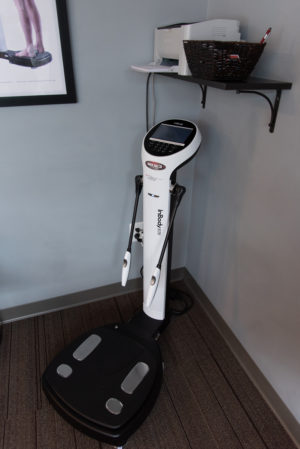
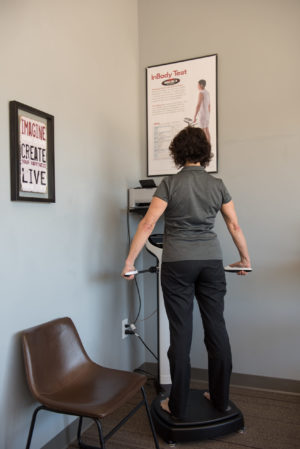
I did my pre-Challenge InBody scan on May 11th. It showed I weighed 171.7 pounds, of which 76.9 pounds was muscle and 34.8 pounds was body fat, and my visceral fat level (the fat stored around your organs in your abdomen) was level 7.
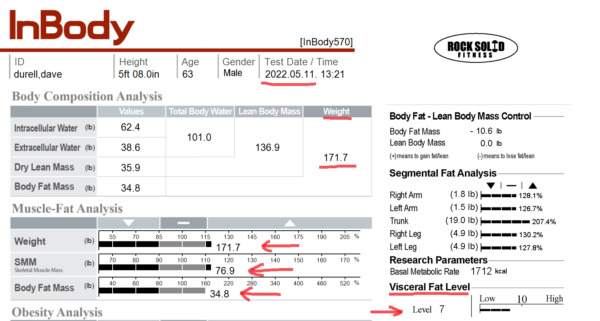
How long does it take to build muscle after 60?
For the 4 weeks from May 16th to June 11th, I performed my Stay Strong Forever strength training workout once a week for 30 minutes, performing 1 set of 8 exercises. I also tracked my calories every day and tried to keep my total calorie intake at around 2200 a day, while striving to get 125 grams of protein (or more) every day as well.
On June 14th, I did my post-Challenge InBody scan, and I was pretty happy with the results 🙂 . It showed I gained 2.2 pounds of muscle mass, lost 3.6 pounds of body fat, and dropped 1 level of visceral fat from 7 to 6.

*The key takeaway is this: there’s nothing special about me. I just followed a system and had the discipline to work hard and stick to my commitments for 4 weeks. There’s no reason you can’t do the same thing with the right program.
I’ll describe exactly what I did to get these fast results below, but first I want to talk about “The Why”.
Benefits of building muscle after 60
So why would somebody want to build muscle after 60 in the first place?
When you’re over 60, strength training is less about appearance and more about health and function. Building and maintaining a high level of muscular strength makes all physical activity easier, and allows us over-60’s to have the highest possible level of pain-free function.
This brings the freedom to say YES to those bucket list items that create lasting memories, whether it’s a family trip to Machu Picchu, trying paddle boarding for the first time, or even just being able to join in the backyard volleyball game at a family reunion.
Resistance training to building muscle has also been shown to reverse specific aging factors in skeletal muscle. (Pubmed)
Benefits of resistance training after 60 include:
- Improved physical performance, movement control, walking speed, functional independence, cognitive abilities, and self-esteem.
- Prevention and management of type 2 diabetes by decreasing visceral fat, reducing HbA1c, increasing the density of glucose transporter type 4, and improving insulin sensitivity.
- Enhancing cardiovascular health, by reducing resting blood pressure, decreasing low-density lipoprotein cholesterol and triglycerides, and increasing high-density lipoprotein cholesterol.
- Promoting bone development, with studies showing 1% to 3% increase in bone mineral density.
- Reducing low back pain and easing discomfort associated with arthritis and fibromyalgia.
How to exercise to gain muscle over 60
The workouts consist of an “A” routine and a “B” routine. You will be working out 2 days a week, with a minimum of 2 rest days in between each workout.
You can work out on the same days of the week, every week; or you can work out every third day, whichever day of the week that falls on. You will alternate between the A and B workouts.
As you get stronger, eventually you need more recovery, and the workouts eventually get cut back to once a week, which is what I do. You will be training your whole body in each workout, using one set of no more than 8 total exercises.
You will be exercising your legs first, since they have your biggest muscles and require the most energy. You will then move on to the upper body, then the midsection, then finish with 2-3 “rebuilding exercises” for body parts you’ve injured in the past and/or are concerned about protecting against injuries in the future.
The exercises can be performed using whatever equipment is available in your gym, as long as the exercise you choose coincides with the movement you are supposed to be doing.
The higher the intensity on each set you do, the better your results will be. Your goal on every set is to reach 100% intensity, the highest possible level, which means exerting a maximum effort. The last rep you perform in each set you do should be the last rep you can possibly perform with proper form. When you work out in this fashion, only one set of each exercise is necessary.
Best workout for stronger muscles after 60
Here’s the exact workout I did during the InBody Challenge that stimulated a gain of 2.2 pounds of muscle mass:
Week 1 – A Routine
- Lower body push – Leg press
- Lower body flexion – Calf raise on leg press machine
- Upper body push – Chest press
- Upper body pull – Seated row
- Midsection – Ab machine crunches
- Rebuilding exercise – Shrugs
- Rebuilding exercise – Tricep extension
- Rebuilding exercise – Bicep curl
Week 2 – B Routine
- Lower body push – Leg extension
- Lower body flexion – Seated leg curl
- Upper body push – Incline dumbbell press
- Upper body pull – Chin up
- Midsection – Low back extension
- Rebuilding exercise – Rear deltoid raise
- Rebuilding exercise – Neck flexion
- Rebuilding exercise – Vertical dumbbell hold (grip strengthening)
Week 3 – repeat A Routine
Week 4 – repeat B Routine
What should I eat to gain muscle after 60?
Once you’ve stimulated your muscles to get bigger and stronger with your workouts, it’s important to give your body the nutrition it needs to make those changes happen. The best way to ensure this happens is by tracking what you eat using a calorie counting app.
The one I used for the InBody Challenge was the Lose It app free version. Another good one is My Fitness Pal, but I haven’t personally used it.
The Lose It app asks you a series of questions to determine your optimal number of daily calories to achieve whatever goal you tell it you want to achieve, and in my experience it’s pretty accurate.
Once you know the total calories you’re shooting for each day, you need to focus on getting enough protein to build your muscles up. People over 50 need 1.6 grams of protein per kilogram of body weight per day to get best results.
If you measure your body weight in kilograms, multiply what you weigh x 1.6, and that’s how many grams of protein you need a day.
For example, if you weigh 75 kilos you need 120 grams of protein a day. (75 x 1.6 = 120.)
If you’re in the U.S. like me and you measure your body weight in pounds, you first divide your weight by 2.2, then multiply that number x 1.6.
For example, if you weigh 165, you’ll need 120 grams of protein a day. (165 divided by 2.2 = 75, x 1.6 = 120.)
As long as you meet your protein requirement, the carbohydrates and fats you consume will make up the rest to keep your total calories where they should be everyday,
Summary
- Commit to a 4-week goal of not missing any workouts, strength training with a maximum effort on every set, and tracking your daily calories using an app like Lose It or My Fitness Pal. It’s much easier to commit and focus to a short time frame like this.
- Make your strength training workouts brief, intense and infrequent for best results – 1 set per exercise performed to a point of muscular failure (with good form), 8 exercises or less per workout, one or two workouts per week with at least 2 days in between each workout.
- Make sure to get 1.6 grams of protein per kilogram of body weight every day. (A kilogram is 2.2 pounds.) For example in my case I weigh 170 pounds, so 170 divided by 2.2 = 77.27, x 1.6 = 123.67 grams of protein per day (I always try to exceed 125 grams).
- Get a friend or group of friends involved for extra accountability, fun and increased motivation.

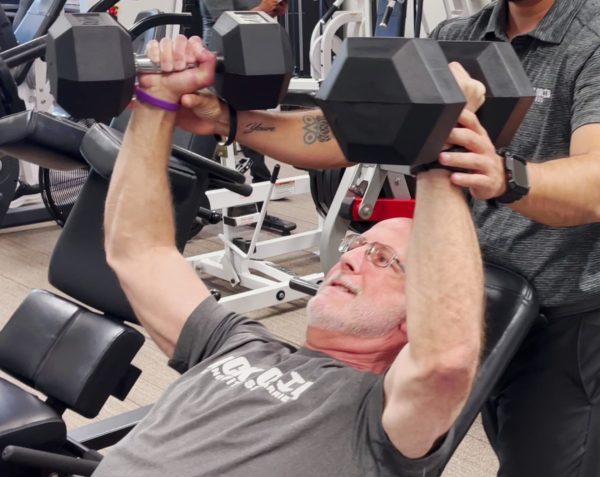
21 Comments. Leave new
Hi Dave,
I’m going to try this. I notice that you do not include the shoulder press or pulldown in this routine. Any particular reason?
Thank you!
Hi Jay, on this routine I substituted incline dumbbell press for shoulder press, and chin ups for the pulldown, just for the sake of variety. These new exercises work essentially the same muscle groups as the old exercises, with the incline dumbbell press also involving the upper pecs a little more. It’s ok to substitute like this any time you want, provided the new exercise is the same movement as the old one, i.e. upper body push, upper body pull, etc. Hope that makes sense.
Hi Dave,
Just discovered your site yesterday. Excellent advice that I can relate to since I’m 64 yo.definitely going to try this. I don’t see any kind of squats so I take it you’re not a big fan of those, also pec flys. Just wondering why?
Thanks
Jerry
Hi Jerry, great to have you here! I am not a fan of barbell squats at all. They are very rough on the spine and shoulder joints, and it’s difficult to exit the exercise safely at any point during the exercise, so that violates 2 of my criteria for a good exercise. For gym training I recommend a seated leg press if one is available, last resort a sled-style leg press if that’s available. For home training I have my clients do ball squats with dumbbells, as pictured here.
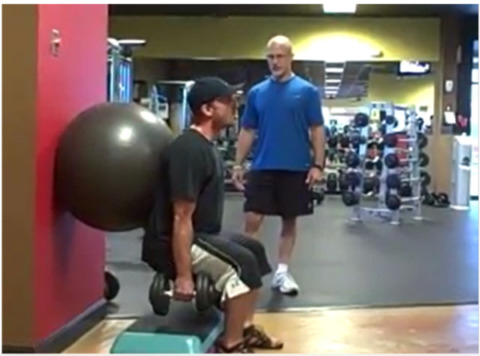
As for pec flys, those are ok provided you don’t overstretch. I think any kind of chest press is much easier on the shoulder joints also, plus you’re consolidating by working your triceps at the same time with a press.
Great questions, thanks for commenting!
Thanks for the reply Dave! I do have a seated leg press available at the Y that I belong to. I usually do some goblet squats as well. Yea, anytime I do the pec fly machine I definitely feel it in my shoulder. Thanks for the advice!
Jerry
You’re welcome Jerry! Stay strong, and let me know if I can help.
Hi Dave, what are your thoughts on Trap bar deadlifts? I’ve never been able to do any type of squats due to lower back issues, but never had an issue with these, I do them with a 4/4 cadence, no stops, constant tension. Brutal exercise. I’m almost 60 and try to get in 2 full body workouts a week and have been doing this for many, many years but don’t really see any increases but I assumed it was because of how long I’ve been doing it and my age. Could doing less frequent workouts bring on progress in your opinion?
Hi Ron, it sounds like with your experience and attention to great form you’ll be fine with trap bar deadlifts, I agree they are a super productive exercise. At this point though I usually recommend people transition away from deadlifts for safety reasons and instead do 3 exercises with the component parts of the deadlift – leg press, back extension and shrugs.
I definitely think less frequent workouts would result in progress. Depending on how you schedule your workouts, you could simply add an extra rest day in between workouts, or if you like working out on the same days every week, you could switch to 3 workouts every 2 weeks, i.e. Monday and Wednesday on week one, Wednesday on week two, then repeat week one, etc. Give either one a try and let me know how it works out, I can practically guarantee some new found progress.
Lastly, with your experience level micro-loading would be a great strategy for stimulating new strength gains – you can learn more in this post: https://www.strengthafter50.com/gaining-muscle-after-50/
Good luck and keep on pumping iron!
Hi Dave, do you always recommend full body routines, or would splitting a routine into an upper and lower be a viable option for training more often, but staying within the confines of proper recovery?
Hi Ron, great question. Yes, I always recommend full-body routines, because I believe that the best gains are made when we train our bodies as a unit and rest them as a unit. Also, using a full-body routines forces you to limit your volume and avoid the temptation of adding too many exercises, because if you’re training intensely you can only do so much in one workout.
Often, using a split routine like you’re describing is a way to satisfy a compulsion for adding more exercises or performing more sets. But when it comes to strength training, more often is not better; harder is better, and the harder you train the less time you can or should spend training.
The only justification for splitting your routine into upper body and lower body in separate workouts would be that you have become so big and strong that you can’t even make it through an 8-set full-body workout, and need to split it into 2 workouts of 4 sets each, with a few days in between. In my experience this is very rare and seldom necessary, especially over age 50.
Hello,
This sounds awesome! I noticed you didn’t mention anything about reps. What is the reference point to determine what weight to use for each exercise?
Hi Nelson, great question, I use a rep range of 7-10 reps for upper body, and 9-12 reps for lower body. So if I can’t perform at least the lower number of reps (7 or 9) I know the weight is too heavy, and if I can do more than the higher number with perfect form, that’s my cue to increase the weight a little on my next workout, to knock me back down into the rep range.
Thank you for the quick response!
👍
Just started working out about a year ago at 59. Have grown some muscle doing a push pull split with 4 sets each of 2 exercises for each muscle, but have had no luck losing belly fat. 46″ waist.
Been thinking maybe a full body routine would be better for belly fat loss, so I think I’ll try your full body routine for a bit, but I have 2 questions.
Is one set till failure of only one exercise per body part really enough volume to maximize hypertrophy?
And what tempo do you use for your exercises? Have read about super slow and am intrigued.
Hi Randy, congrats on starting working out at 59! It’s the closest thing we have to a real life fountain of youth.
One set to failure is definitely enough to maximize hypertrophy. You have to remember that intensity of effort and duration of effort are inversely proportional – meaning you can either train hard, or you can train long, but you can’t do both successfully. That’s why nobody on the earth can sprint all-out for a mile – the duration of a mile run is too long to sustain maximum intensity.
And when it comes to strength training, the workout must be as intense as possible to stimulate hypertrophy – and one set to failure is as intense (and as brief) as you can get.
The challenge for you will be getting in the habit of going all-out, to muscular failure, on one set. I’m sure you work very hard when you work out, but going all out for one set is an acquired skill, and way different than working very hard for 8 sets. It will take some practice, so give it a little time.
As far as losing belly fat, activity and nutrition play a key role too, so make sure to get 30+ minutes of minimum to moderate intensity activity 2-3 days a week, and limit your total calorie intake while keeping your protein consumption high. Good luck!
Sorry Randy, forgot to answer your question about tempo. I recommend 2 seconds for the lifting phase and 4 seconds for the lowering phase. Faster than super slow, but slow enough to take out the momentum.
On any exercise except presses I recommend holding the weight in the fully contracted position for 1 second; on presses there is no hold because that would amount to a lockout, which allows tension to come off the muscles.
Hi Dave,
First of all, I am most grateful to you for sharing your blog and videos. They are brilliant, and most thought provoking.
However, I have two issues giving me.
pause.
1. Training alone, I doubt my ability / toughness to achieve the required intensity in a single set, particularly on leg exercises. I fear that I just do not have the grit to go to real failure. (Strangely, I find that on some exercises this is not a probleme: one rep you are fine, the next you just can’t lift the weight at all. But on other exercises I can just about always get another rep in if I really, really try. Chest press and rows can be like this, but particularly squats. But, without a trainer, I fear that I would only train as far as having 1-2 genuine reps in reserve. Doing just one set per exercise, I would surely lose the benefit of your program? (Currently I use a form of high density training. Using a weight I could do 15 reps, I just do 10, but I do 4 sets with 30-40 secs rests. Muscular fatigue builds up. I should go to failure on the 4th set but probably wimp out at 2 reps in reserve. However, at least I have a volume of work done. This form of training has kept me fit and has maintained my muscle mass (I’m 66) but not developed my strength.
2. Could I ask you to clarify what you mean by ‘ gain strength’? I appreciate that any middle aged person who has not trained for a while and follows your program could expect gains in both strength and muscle for a few months, but this may simply be regaining strength and muscle lost. What about someone, like me, who has been training regularly (if sub-optimally)? Could I expect increases in my 1-rep maxes? My understanding is that to develop strength you need to lift heavy for 1-5 reps I.e. 3-20 seconds. Do your, longer sets 40-60 seconds not build muscular size and endurance rather than 1-rep max strength?
Many thanks, Alan
Hi Alan, glad you are enjoying the blog post and videos! Very thoughtful questions, I’ll try to unpack them bit by bit.
1. Even if you don’t go to real failure, and only train as far as having 1-2 genuine reps in reserve, you should always take it to that level. 80-90% intensity is way better than anything less than that. In the case of squats, for safety reasons you should always pull up 1-2 reps short of true failure anyway.
I don’t think you would lose the benefit of my 1-set program by training that way, but I understand your reluctance to go from 4 sets all the way down to 1 set, I get that a lot from people who are used to multi-set routines.
As I look at your high density routine, it seems to me that the 1st 3 sets are warm up sets (10 reps when you could get 15), and the last set is your “money set”, where you go to having only 2 reps in reserve. What I don’t see mentioned is anything about progressive overload, which if missing is the reason you have not developed your strength.
The safest way to implement progressive overload is to use a rep range. In your case, on your 4th and last set, if you’re using a weight you could do 15 reps with, you could set a rep range of 10 to 13 ( or 9-12 if you’re superstitious :). If you hit 13, stop there, and on your next workout increase the weight a little on your next workout and try for at least 10. Any time you hit 13 reps, increase the weight a little on your next workout to knock you back down into the 10-13 range.
Even a 1/2 kg (1.25 lb.) increase is significant. If you went up 1/2 kg every 2 weeks for a year, you’d be using 13 kg (28.6 lb.) more on that exercise! That’s a big gain for someone in their 60’s.
My idea would be for you to try cutting out the 1st 2 sets of your current routine, and just do the last 2 sets, implementing my rep range idea on the last set. The decrease in volume will create an opportunity for an increase in intensity, which will translate into increased strength. If you don’t like it after a couple weeks you can always go back to your old routine.
2. By ‘gain strength’, I mean being able to use more weight on a given exercise by utilizing the progressive overload principle, as I described above. In your case as an experienced trainee, your gains will be smaller and take a little longer, but will still happen by utilizing the rep range system I just described.
You do not need to do 1-5 reps per set to get stronger. If your 10-rep max goes up, you can expect your 1-rep max to go up, and doing 1-5 reps carries a lot higher risk of injury.
My system builds strength and muscular size. Strength gains typically precede size gains; if you keep doing the same weight all the time, your muscles have no reason to get bigger. No matter what system someone uses, progressive overload is the key to whether it will work or not for building strength and muscle.
Hope that helps!
Hi Dave,
Many thanks for your thorough and sympathetic answer. It makes a great deal of sense!
I certainly have found it difficult to incorporate progressive overload into multi-set exercises, e.g. increasing the kgs can lead to the reps collapsing even before the final set. I get it: much simpler,and therefore better for focus, just to have one set to focus on. I’ll give it a go!
Thanks again,
Alan
Awesome Alan! 👍